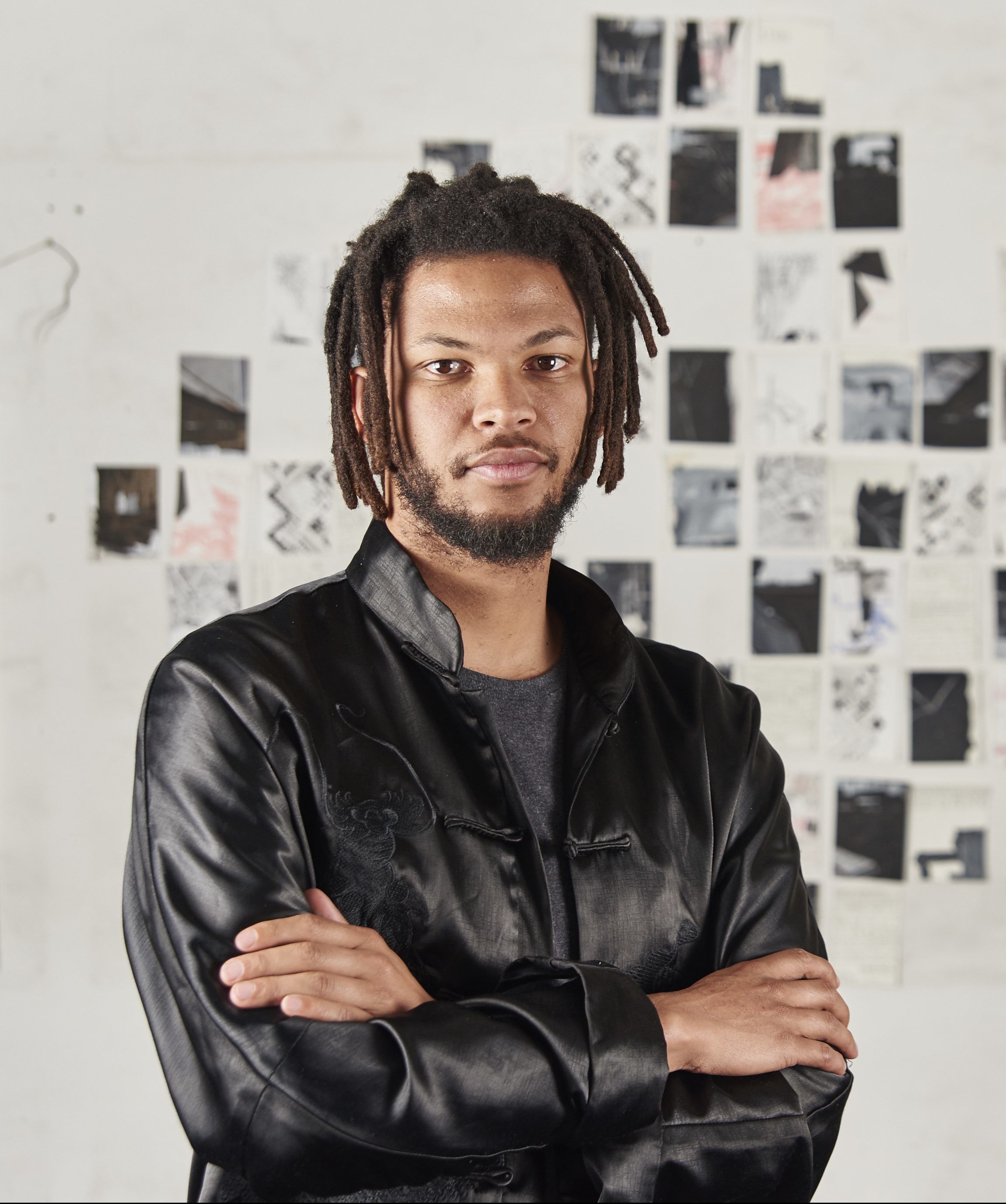Nolan Oswald Dennis embraces misreading and misinterpretation
Interdisciplinary artist Nolan Oswald Dennis traverses across black consciousness of space; immersing himself in the material and metaphysical conditions of decoloniality —journeying through the politics of space and time.
Dennis recently presented his second solo show with the Goodman Gallery in Cape Town; “Options” (24th January – 9th March 2019), comprising a new series of drawings and installations. These drawings convey an intense process of gesturing and mark making —incisions revealing complex patterns and points moving in space.
One is not quite certain what is depicted in Dennis’ drawings; are these intestine, worms or unspecified worm-like shapes ?
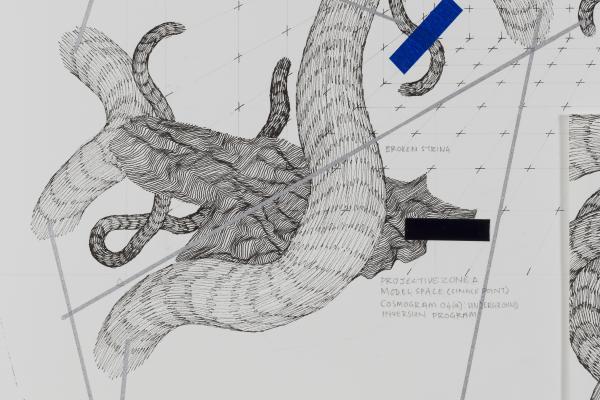
The artist complicates iconography, notions of “finished work” as well as the one-directional nature of the art making process (with artist as teacher and viewer as learner). His work is open but not hollow—this openness of the work exposes itself to misreading and misinterpretation. Dennis uses the work’s vulnerability to misinterpretation as an opportunity for new knowledge to enter the space; where the viewer/interpreter takes on the role of “completing” the artworks. In this sense, the work’s impact can only be multiplied as each new set of eyes creates a possibility for a new narrative to emerge.
I had the opportunity to briefly interview the artist about his process as well as his reflections on the recent show.
Nkgopoleng Moloi: I’m interested in this idea of using drawing as a way to think about something else, while simultaneously being the actual thing. What is your relationship with different mediums, how you approach them and how you use them to say (or not say) different things ?
Nolan Oswald Dennis: I was thinking about Audre Lorde’s idea — the master’s tools will never dismantle the master’s house. And I was thinking about when a tool stops being the master’s tool and becomes your tool? What kind of transformation must happen to give these tools the capacity to dismantle houses ? I think of the media I work with in similar ways. Who does this belong to? What can it do ? What do I need to do for it do something else ?
This is mostly an unspectacular process, and in my practice consists mostly of small gestures for holding secrets: marks, notations, clues. I want the work to be open to misreading as both a tactic for concealing things in the work (world) as well as a way of revealing things in the viewer.
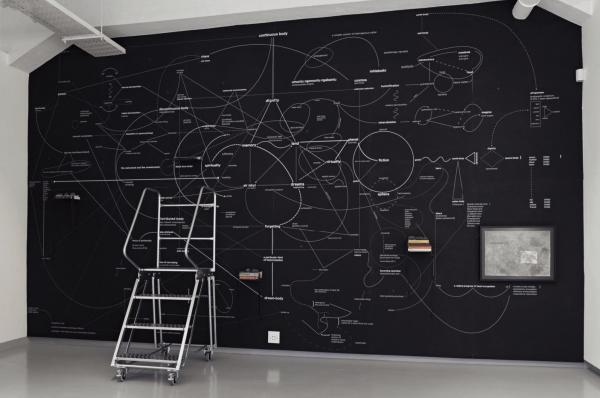
No compensation is possible (working diagram), 2018
Wallpaper, chalk and found objects
Courtesy of Goodman Gallery
NM: I have read a couple of articles of your last show; “Options”, each one is different and interprets the work differently. What is your view on this openness with which we are reading your work?
NOD: I think the work is only halfway done until it is read —the question is always who is reading, and therefore who is doing the other half of the work?
It’s actually a huge responsibility to put on a reader/viewer, to demand that they put themselves into the work. I’m all about leaving some space which demands filling — the idea that to “see” the work requires you to first put something of yourself into the work. The viewer must start with an interpretation before they can “see” the work, not after they see it. I think what you see is also an invitation to share the labour of making this art work.
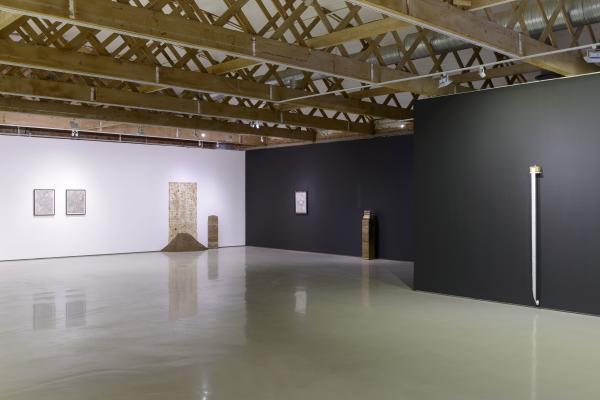
NM: Susan Sontag speaks of this idea of needing to interpret artworks, that we can often do it at the expense of the form; placing too much attention on what we think the work means vs what the work is, especially in terms of materiality etc. What are your thoughts?
NOD: I guess I am interested in those forms, in terms of materiality and technique, which are already inadequate. What I mean is that some forms (drawings, models and maquettes ) already assume that they must be interpreted —that they are working forms and not final forms. The materiality of an architectural model is only a simulation of whatever concrete or brick structure might ultimately be built. So formal questions become themselves interpretive —you have to ask yourself on the level of the material; what does this cardboard mean?
For me that’s an important place to occupy —the place before or parallel to the real world. It’s a place that allows asks us to do some interpretive work. I think art is important for its ability to operate from this parallel position where little can be taken for granted. It’s a place where things can be remade, and I think it’s interesting to think about how things can be both one thing (materially) and a totally different thing (interpretively)……that objects can have this double life.
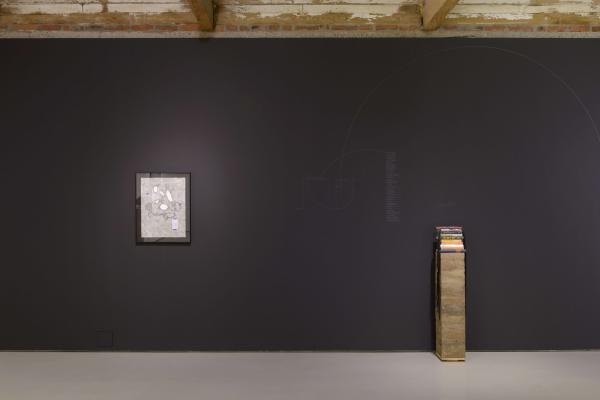
Courtesy Matthew Bradley
NM: Can you explain how the printers installation in the exhibition work on a technical level (Biko vs Fanon and Winnie Mandela) ?
NOD: The first part of the work is research to build the dataset. In the case of Biko/Fanon, that means reading “I write what I like” and “The Wretched of the Earth” and extracting every sentence with the words ‘touch’ and ‘hold’. This is then converted into two long lists of sentences.
The second part is writing an algorithm which selects sentences from this dataset and produces new sequences as an ongoing poetic conversation. Part of what this algorithm does is recombine the sentences based on a number derived from the ambient noise (static) in the room where the printer is placed.
There are two printers which run this code in real time, reading text from the dataset and combining it in a sequence read from the electrical noise of where it is installed. The printer then prints, on roll of thermal receipt paper, an ongoing conversation between Steve Biko and Franz Fanon about touching and holding.
Nomzamo is a single printer which does a similar thing with the archive of Winnie Mandela, except she is alone, having a dialogue with no-one (or everyone) based on the words ‘before’, ‘between’ and ‘alone’.
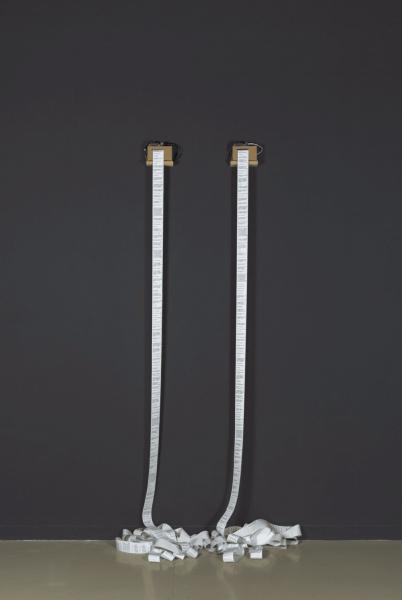
Biko/Fanon, 2018
Two receipt printers, microcontroller, shelf
Courtesy Goodman Gallery
NM: I’m interested in this concept of Ubuntu vs black loneliness as you speak of it. When we experience one and not the other or both simultaneously etc. Can you elaborate on your thinking through this?
NOD: I guess it is something I’m still working through; Ubuntu as a theory of radical interconnectedness and Biko’s declaration “black man you’re on your own” as a kind of radical loneliness. I’m interested in how these two concepts work together—as a dialectic of black consciousness. And also how they are both theories of love and theories from love. Radical empathy and radical entropy, a tactic of black entanglement.
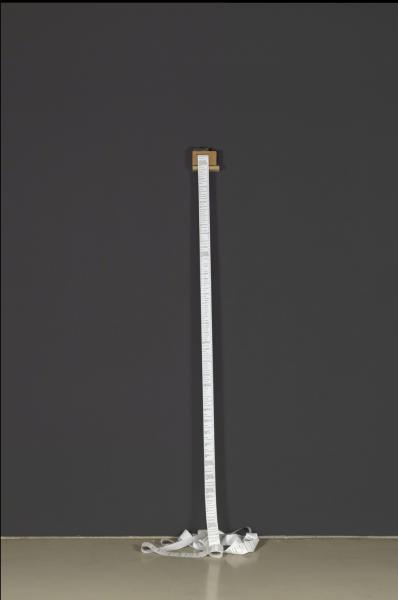
Nomzamo, 2018
Receipt printer, microcontroller, shelf
NM: What texts are you currently reading or engaging with that are informing your thoughts/work?
NOD: I’m always reading Angel Kyodo William’s “Being Black” about black zen practice.

